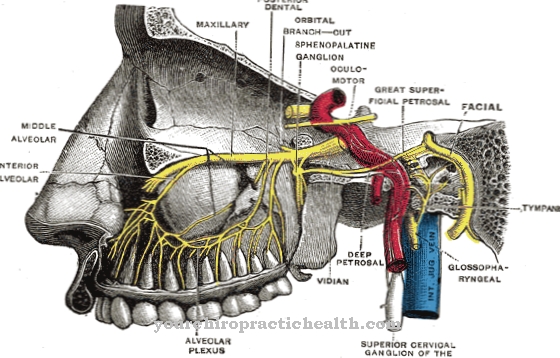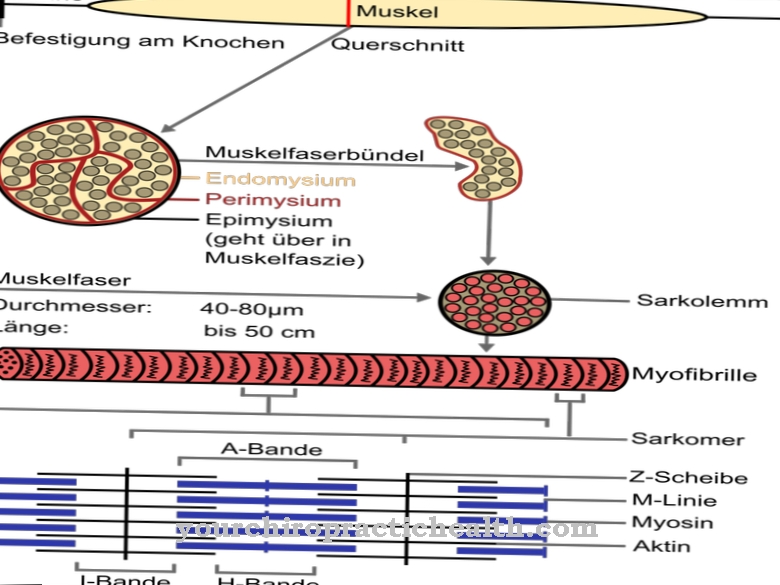Globulins are proteins found in animal and human organisms. They can be divided into four groups. In addition to alpha-1 globulins, these plasma proteins include alpha-2 globulins, beta globulins and gamme globulins.
Most globulins are made in the liver, some in plasma cells. They have very different tasks in the human body. An increase or decrease in certain globulin values can therefore indicate a wide variety of diseases. An example of a hereditary disease is the so-called alpha-1 antitrypsin deficiency.
What are globulins?
Globulins are plasma proteins found in animals and humans. They also serve as a storage medium for plant organisms. There are over a hundred plasma proteins known today.
These are present in the blood plasma at a concentration of around 7.5 grams per deciliter. These are divided into albumins and globulins. With 60 percent, albumins make up the largest proportion of the total protein content, closely followed by so-called immunoglobulins. Most globulins are made in the liver. A subgroup of these proteins, the gamma globulins, are released into the blood by plasma cells.
Anatomy & structure
The differentiation of proteins into albumins and globulins can be explained by their different properties and their solubility behavior. While albumins are water-soluble, globulins are very difficult to dissolve in water.
Globulins can be divided into four groups. The so-called alpha-1 globulins include, for example, the billirubin transporter, transcortin, transcobalmin and alpha-1 antitrypsin. Alpha-2 globulins include plasminogen, alpha-2 macroglobulin and haptoglobin. Transferrin, C-reactive protein and lipoproteins belong to the group of beta globulins. The group of immunoglobulins such as IgA and IgE are gamma globulins. Globulins are so-called glycoproteins. These proteins are macromolecules, which consist of a protein molecule and one or more sugar groups bound to one another. These proteins are often composed of simple sugars such as glucose, fructose or mannose.
Function & tasks
The different groups of globulins have different tasks in the human organism. The group of alpha-1 globulins is a rather small group with only four percent of the total protein content in the blood plasma. The so-called Alpa-1 antitrypsin plays a special role in this. This protein is called a serpin. It protects the body from serine proteases by inhibiting their effects. As a result, the protein is prevented from being broken down into cells. The protein works specifically against the protein-digesting trypsin.
Alpha-2 globulins make up about eight percent of the total protein content in the blood plasma. In terms of quantity, for example, haptoglobin and alpha-2-macroglobulin are important. The latter plays a role in inflammatory processes, but is otherwise clinically insignificant. Haptoglobin is a transport protein for hemoglobin, the red blood pigment.
Unbound hemoglobin is toxic and can primarily damage the nerve fibers around the kidneys. Therefore, the central task of haptoglobin is to transport the blood pigment into the reticuloendothelial system. There it can be broken down and excreted through the kidneys. Thus, haptoglobin also has an antibacterial effect. While hemoglobin is bound to the protein, it is no longer available as a substrate for microorganisms in the event of infections.
Beta globulins cover 12 percent of the total protein content. An important representative of this group is the globulin transferrin. Transferrin is a transport protein for iron which, in unbound form, has a toxic effect. The so-called fibrinogen is also important. Fibrinogen is responsible for blood clotting. It closes open wounds through the formation of a fibrin network.
The so-called immunoglobulins belong to the gamma globulins. They cover around 16 percent of the protein content in the blood plasma. These globulins are formed in plasma cells and released into the blood from there. The immunoglobulin M, for example, plays an important role. It is responsible for the immune system's first antibody response. The immunoglobulin A is mainly secreted as an antibody in the body fluids to fight against pathogens there.
Diseases
A so-called alpha-1 antitrypsin deficiency is a hereditary disease. In those affected, the globulin alpha-1-antitrypsin is not formed correctly in the liver and can therefore not be transported into the bloodstream. As a result, trypsin is no longer inhibited in its function and attacks the body cells. This deficiency primarily damages the lungs and liver.
An increase or decrease in globulins in the human body can give an indication of various diseases. An increase in alpha-1 globulins can occur, among other things, in acute infections, tissue injuries, rheumatic diseases, heart attacks, inflammatory bowel diseases or tumors. In the case of a decrease, in addition to the alpha-1-antitrypsin deficiency already described, there may be inflammation of the liver.
Alpha-2 globulins are increased in the body during acute phases of inflammation, but can also occur in connection with kidney diseases. A deficiency in alpha-2 globulin does not have to be of clinical relevance, but can occur with malnutrition or destruction of red blood cells.
A beta globulin level that is too high can indicate inflammation, cirrhosis of the liver, an iron deficiency or a high cholesterol level, among other things. A low concentration in the blood can occur with malnutrition. In addition, people who have autoimmune diseases can have low levels of beta globulin.
If the gamma globulin is increased, there is probably a long-lasting inflammation in the body. These globulins are also produced in breast cancer diseases. A decrease in the gamma globulin value can indicate a congenital disorder of the immune system. In addition, patients may have low levels of gamma globulins after chemotherapy.













.jpg)

.jpg)
.jpg)











.jpg)